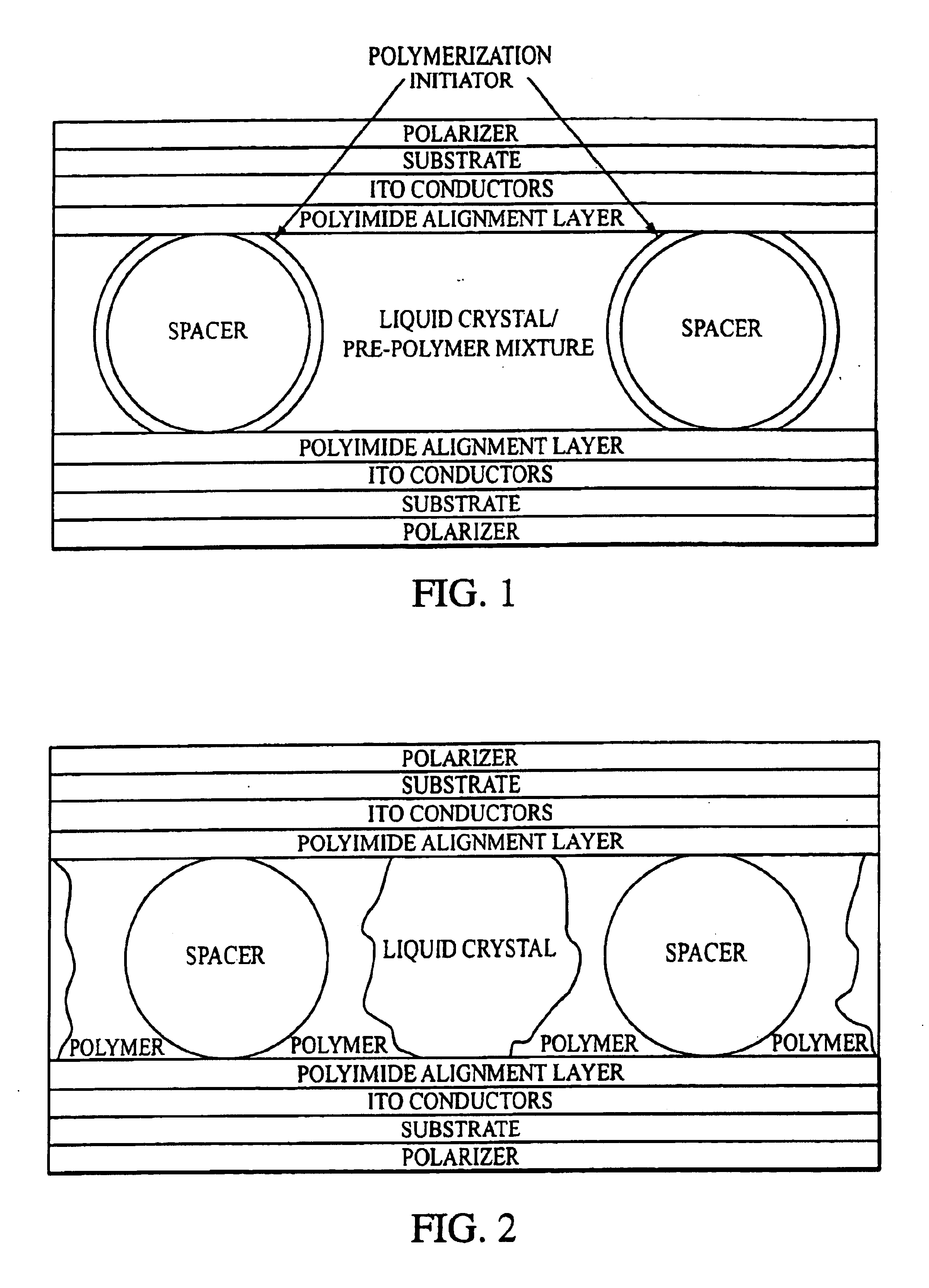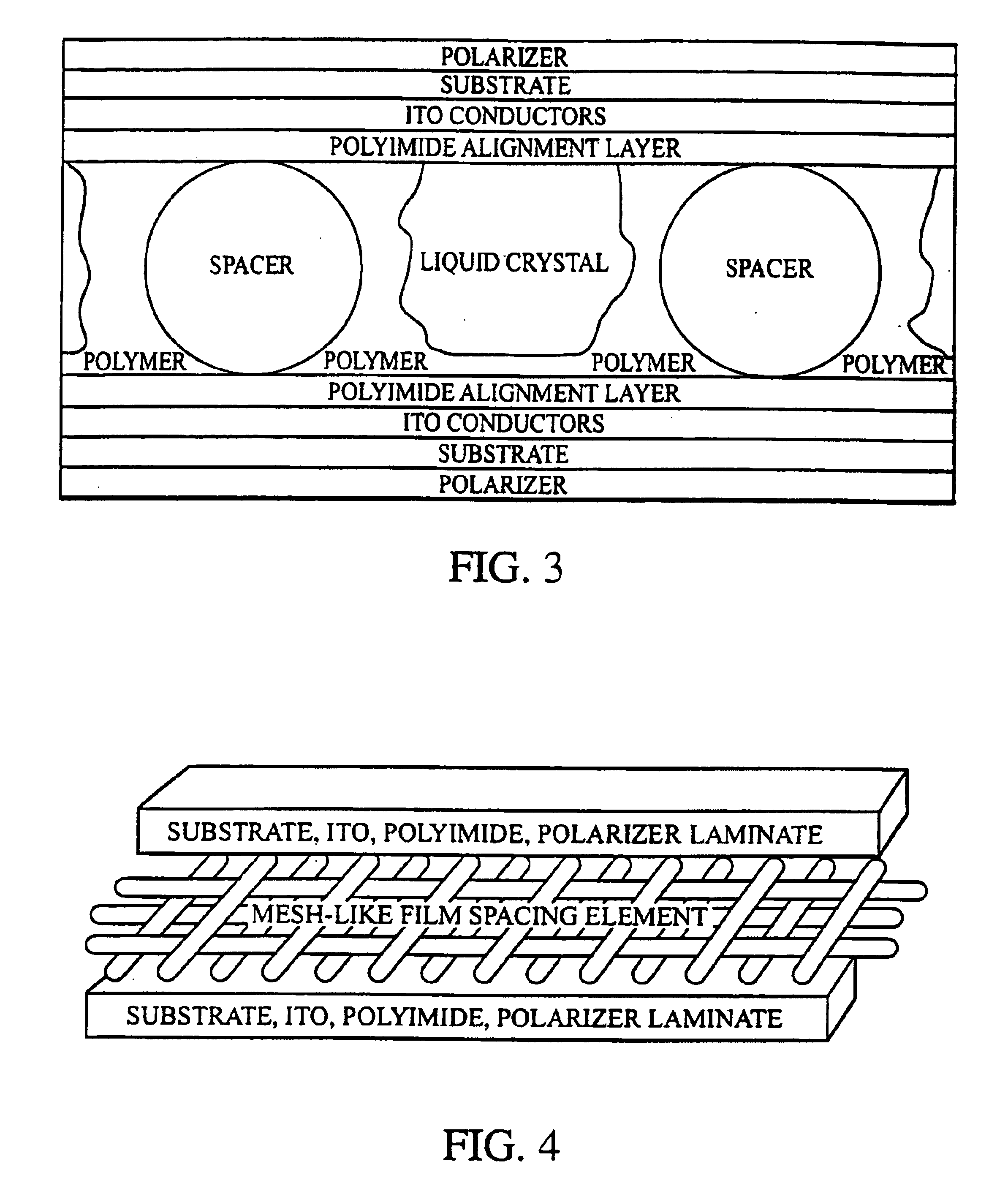Electrooptical displays with polymer localized in vicinities of substrate spacers
a technology of electronic display and polymer, applied in the field of liquid crystal and other electronic displays, can solve the problems of high drive voltage, damage to the display within the device, repair and product return, etc., and achieve the effects of good performance, peeling strength, and optimizing the laminate structure of the plastic display
- Summary
- Abstract
- Description
- Claims
- Application Information
AI Technical Summary
Benefits of technology
Problems solved by technology
Method used
Image
Examples
Embodiment Construction
According to the present invention, in the preferred embodiment, a liquid crystal display device is assembled using the following procedure:1. The substrates are a flexible polymer material with a low level of birefringence to improve the optical qualities of the final product and having a glass transition temperature greater than 150 degrees C. in order to facilitate the various drying and baking operations. A polymer that meets these requirements is poly ether sulphone (PES). A vapor barrier is coated onto the outside surface of the substrate to improve the reliability and product life of the display; the vapor barrier is typically composed of a thin film laminate structure of silicon oxide and another polymer.2. The substrates are coated with a vacuum-deposited layer of typically indium tin oxide (ITO), which is a transparent conductor. The ITO is then patterned via chemical, electron beam, or laser etching.3. A mixture is prepared of approximately 10% photoinitiated pre-polymer ...
PUM
| Property | Measurement | Unit |
|---|---|---|
| size | aaaaa | aaaaa |
| diameter | aaaaa | aaaaa |
| wavelength | aaaaa | aaaaa |
Abstract
Description
Claims
Application Information
 Login to View More
Login to View More - R&D
- Intellectual Property
- Life Sciences
- Materials
- Tech Scout
- Unparalleled Data Quality
- Higher Quality Content
- 60% Fewer Hallucinations
Browse by: Latest US Patents, China's latest patents, Technical Efficacy Thesaurus, Application Domain, Technology Topic, Popular Technical Reports.
© 2025 PatSnap. All rights reserved.Legal|Privacy policy|Modern Slavery Act Transparency Statement|Sitemap|About US| Contact US: help@patsnap.com



